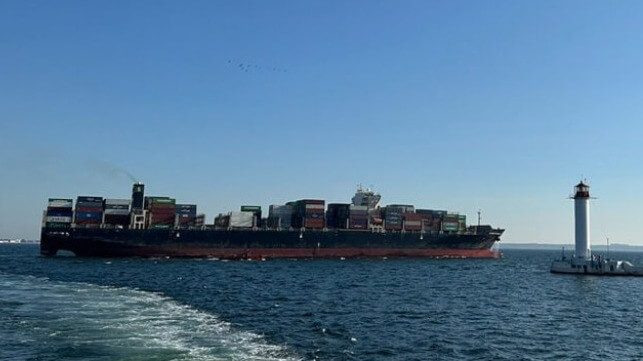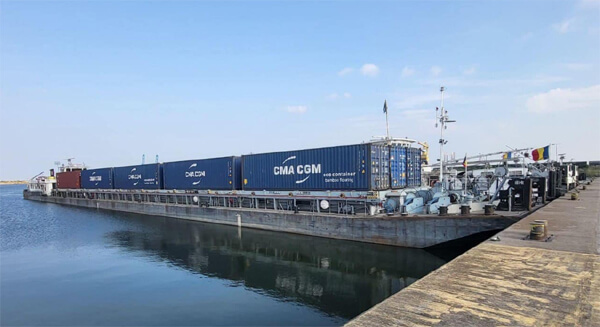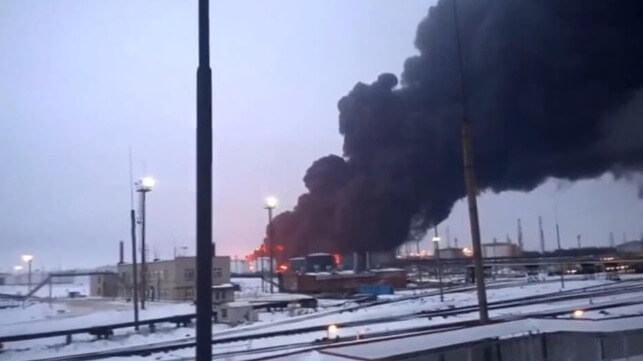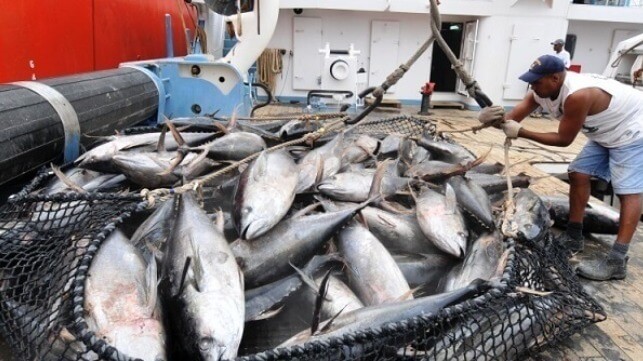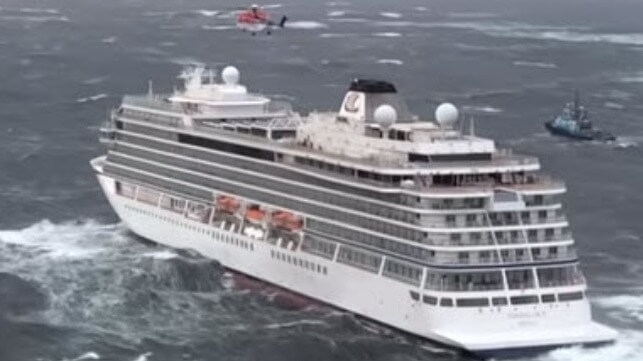Reuters | March 20, 2024

Search and rescue efforts are underway at the Pioneer gold mine in Russia. Credit: Ministry of Emergency Situations, Russia
Rescuers in Russia’s far east battled rubble and water on Wednesday in an attempt to save 13 miners who have been trapped 120 metres (390 feet) underground in a gold mine for nearly two days.

The miners were trapped on Monday by a rock fall at the Pioneer gold mine. The mine, one of Russia’s largest, is located in the Amur region which borders China, about 5,300 km (3,300 miles) east of Moscow.
“The situation remains difficult,” Amur Governor Vasily Orlov said on Telegram. Orlov said that specialist mine rescuers had flown in from Russia’s vast coal region, the Kuznetsk Basin known as Kuzbass, and other Siberian regions.
He said hundreds of rescuers had cleared swathes of rubble and rock and that they were pumping out water. There was no contact with the trapped miners.
Orlov said that rescuers had decided to drill down through several hundred metres of rock to where the miners are, in an attempt to assess their condition and establish contact.
President Vladimir Putin has been informed of the situation and ordered that every effort be made to save the miners, the Kremlin said on Tuesday.
Russian emergency services said on Wednesday that the volume of rubble and rock at the mine was nine times larger than previously estimated, the RIA state news agency reported.
The mine is owned by sanctions-hit Russian copper and gold producer UMMC.
(By Guy Faulconbridge; Editing by Mark Trevelyan)
Reuters | March 18, 2024 |
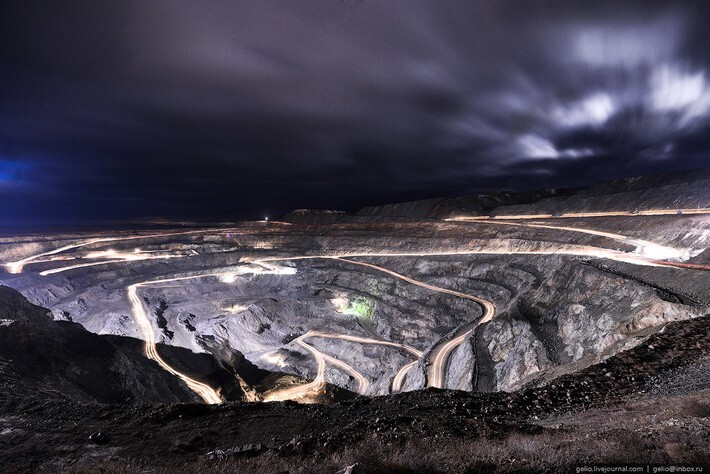
Credit: UMMC
Thirteen miners were trapped after a rock fall in a gold mine in Russia’s Amur region, Russia’s Ministry of Emergency Situations said on Tuesday.

“Communications are being restored and mechanized clearing of the transport slope is being carried out,” the ministry said on the Telegram messaging app.
The accident occurred at the Pioneer mine, one of the largest gold mines in Russia based on processing capacity, Russian media reported. The mine is located in the Eastern Siberia Amur region that borders China to the south.
The mine is owned by sanctions-hit Russian copper and gold producer UMMC.
(By Lidia Kelly; Editing by Lincoln Feast)
Eight other miners have been injured following an explosion in a private coal pit, with an official suspecting the incident to be caused by methane gas.
An explosion inside a coal mine in southwest Pakistan has left 12 miners dead while eight others have been rescued, officials said on Wednesday.
A gas explosion shook the private coal pit in Balochistan's mining region of Khost on Tuesday evening, trapping the workers about 800 feet (244 meters) below ground.
The bodies of the dead were all recovered as the rescue operation ended on Wednesday morning.
"The rescue operation has been just completed," Balochistan province's chief inspector of mines, Abdul Ghani Baloch, told news agencies on Wednesday.
He said that 20 miners had been inside the mine when the explosion took place.
The injured have been taken to hospital, he added.
Possible methane gas incident
According to news agency AFP, Abdullah Shahwani, Balochistan's director general of mining, also confirmed the death toll and said that "initial reports suggest the incident was caused by methane gas."
Pakistan's Prime Minister Shehbaz Sharif in a statement expressed his grief over the deaths.
Pakistan's mines are known to have hazardous working conditions and poor safety standards and deadly incidents are not uncommon.
dvv/fb (AFP, AP, Reuters)
Twelve miners were killed and eight rescued after an explosion in a coal mine in the Zardalo area of Balochistan’s Harnai district, officials said on Wednesday.
Earlier, it was reported that 18 miners were trapped after a big portion of the mine caved in when a powerful explosion took place. The directorate of chief inspector of mines had said that teams launched a rescue operation.
“The rescue operation has been just completed,” said Balochistan chief inspector of mines Abdul Ghani Baloch on Wednesday morning.
He said that 20 miners had been inside the mine when a methane gas explosion took place overnight. He added that rescue teams recovered 12 bodies while the survivors had been taken to hospital.
“Two bodies were recovered during the night, with the remaining 10 retrieved early in the morning,” Baloch told AFP.
However, Balochistan Chief Minister Sarfraz Bugti stated on social media platform X that the number of rescued miners was six.
Abdullah Shahwani, the province’s director general of mining, also confirmed the death toll.
It was initially thought that there were only ten miners involved in the cave-in about 80 kilometres east of Quetta. Rescue workers from the government mining department and the disaster management agency toiled through the night to reach them.
A group of eight people who were attempting to rescue their colleagues also became trapped for several hours but were later brought to safety by a government rescue team — some of them unconscious.
Prime Minister Shehbaz Sharif issued a statement expressing “profound sorrow and grief over the loss of precious lives”.
According to Radio Pakistan, the premier directed that all possible medical treatment be provided to the injured miners.
CM Bugti termed the rescue operation “very risky”, adding that “unregulated mining in Balochistan is a big problem”.
In a post on X, he said the provincial government would soon “announce and implement policies to protect miners”.
Terming such incidents as “very painful and sad”, he said the government would provide all possible relief to the injured and affected families.
National Assembly Speaker Sardar Ayaz Sadiq and Deputy Speaker Syed Ghulam Mustafa Shah also expressed their grief on the incident.
Conveying their condolences to the bereaved families, they prayed for the speedy recovery of the injured.
Past incidents
Coal deposits are found in the western areas of Pakistan that sit near the Afghan border and mine accidents are common, mainly due to gas build-ups.
Mine workers have complained that a lack of safety gear and poor working conditions are the key causes of frequent accidents, labour union officials have said in the past.
“This incident is neither the first nor will it be the last in Balochistan,” Lala Sultan, head of the Balochistan Coal Mines Workers Federation told AFP.
“Safety measures at coal mines are scarcely implemented. While other provinces have some safety protocols in place, in Balochistan safety is utterly neglected.”
In December, two coal miners were killed and three injured when a fire broke out in a private mine in Balochistan’s Duki coal field.
In September last year, three workers were buried under the rubble of a coal mine in Sindh’s Jamshoro when a mine caved in.
Earlier the same year, a coal miner was killed and three received burn injuries in a methane gas explosion in a mine in the Duki coal field.
A year ago, at least six miners were killed in a gas explosion inside a coal mine in the Harnai district.
In May 2018, 23 people were killed and 11 more wounded after gas explosions tore through two neighbouring coal mines in the same region.
A total of 43 workers also died in 2011 when gas explosions triggered a collapse in another Balochistan colliery.
AngloGold Ashanti maintains output forecast after flooding at Australia mine
Reuters | March 19, 2024 |
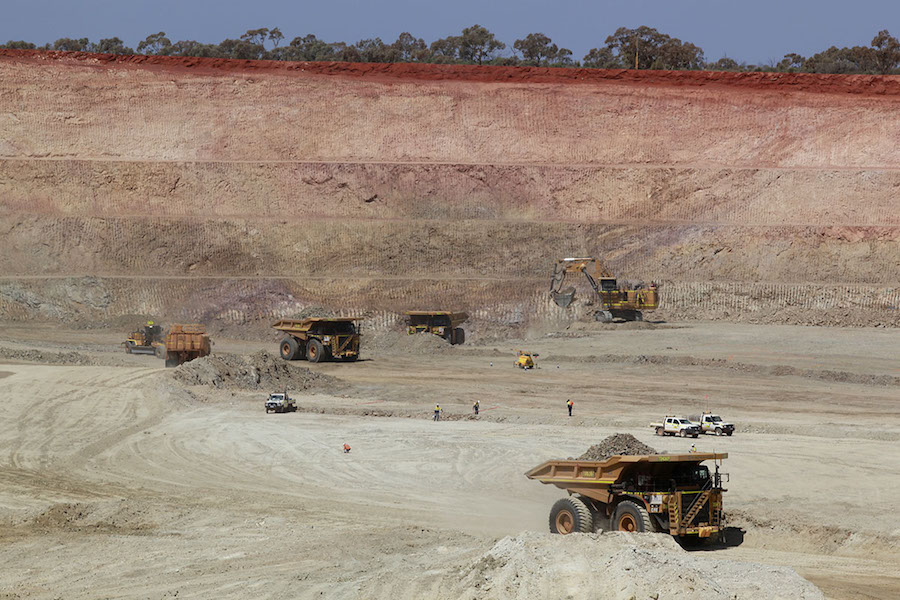
AngloGold discovered Tropicana in 2005, 330 km east-northeast of Kalgoorlie. (Image courtesy of Tropicana JV.)
AngloGold Ashanti expects to meet its gold output target of up to 2.79 million ounces this year despite flooding at its Tropicana mine in Australia, the company said on Tuesday as it reported a headline net loss of $46 million for 2023.

The loss was mainly due to lower gold sales, corporate restructuring costs, higher environmental provisions as well as costs of job cuts, care and maintenance at Córrego do Sítio in Brazil, which was idled last August.
It compares with a restated headline profit of $489 million the year before. AngloGold Ashanti, which also has operations in Africa and the Americas, restated its financial statements for 2022, which the company said “contained an error related to the reported amount of the deferred tax asset with regard to the Obuasi mine” in Ghana.
The miner said while it anticipated gold production at its Tropicana mine to be impacted during the first half of 2024, “any decrease is expected to be largely recovered in the second half”.
“Consequently, the company does not believe that this event will have an impact on its gold production and cost guidance provided in February 2024, which guidance is therefore maintained,” AngloGold Ashanti said.
Tropicana, which is 70% owned by AngloGold Ashanti and contributed 310,000 ounces or 12% of the group’s total 2023 output, was impacted this month by heavy rains and flooding.
Mining operations have been restricted due to the flooding, while the processing plant is treating stockpiled ore at a reduced throughput rate, AngloGold Ashanti said in a statement.
(By Nelson Banya; Editing by Emelia Sithole-Matarise)
Bloomberg News | March 17, 2024 |
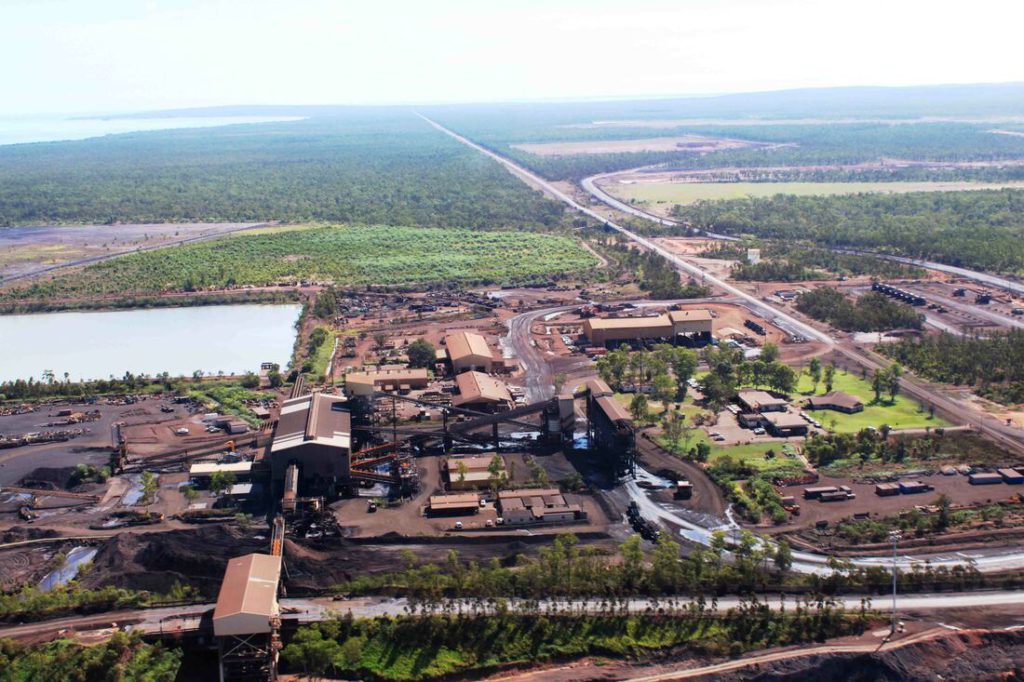
Located on an island in Australia’s Gulf of Carpentaria, Groote Eylandt (GEMCO) produces high-grade manganese ore. Credit: Groote Eylandt Mining Company
Residents in Australia’s far north are bracing for destructive winds and intense rainfall as Severe Tropical Cyclone Megan moves closer to the coastline, prompting evacuations and the closure of a major manganese mine.

The category three cyclone in the southwestern Gulf of Carpentaria is forecast to cross the coast Monday, according to an update from the Bureau of Meteorology. After making landfall, it’s expected to weaken during Tuesday and move west across the Northern Territory as a tropical low, the bureau said.
The storm has already led to the closure of a manganese mine on Groote Eylandt island, the world’s largest producer of the metal, according to the Northern Territory government. The mine’s production value was A$1.53 billion ($1 billion) in 2022-23, it said. The storm may also impact Shell Plc’s Prelude liquefied natural gas plant off the coast of Western Australia.
The very destructive core of the storm is expected to impact the coast between the Northern Territory and Queensland border with winds of up to 200 kilometers (124 miles) an hour, according to the bureau. About 800 people are likely to be evacuated from the Indigenous community of Borroloola to Darwin on Monday, federal Agriculture Minister Murray Watt said in a radio interview.
Another tropical low storm northwest of the Pilbara coast is expected to remain weak until Tuesday, the bureau said. From Wednesday, it is forecast to move steadily westward across the Indian Ocean and have an increasing chance of developing into a tropical cyclone. At this stage, there is no threat of any direct impacts to the Pilbara coast, it said.
(By Keira Wright)


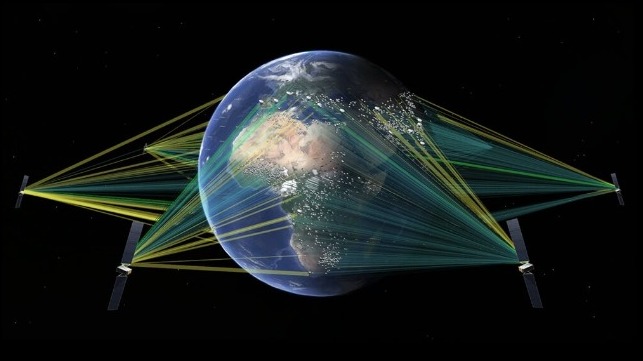
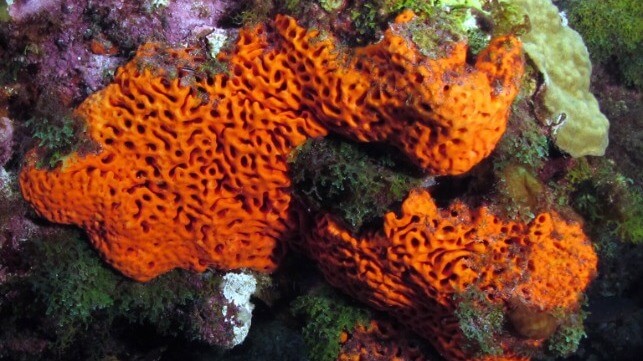
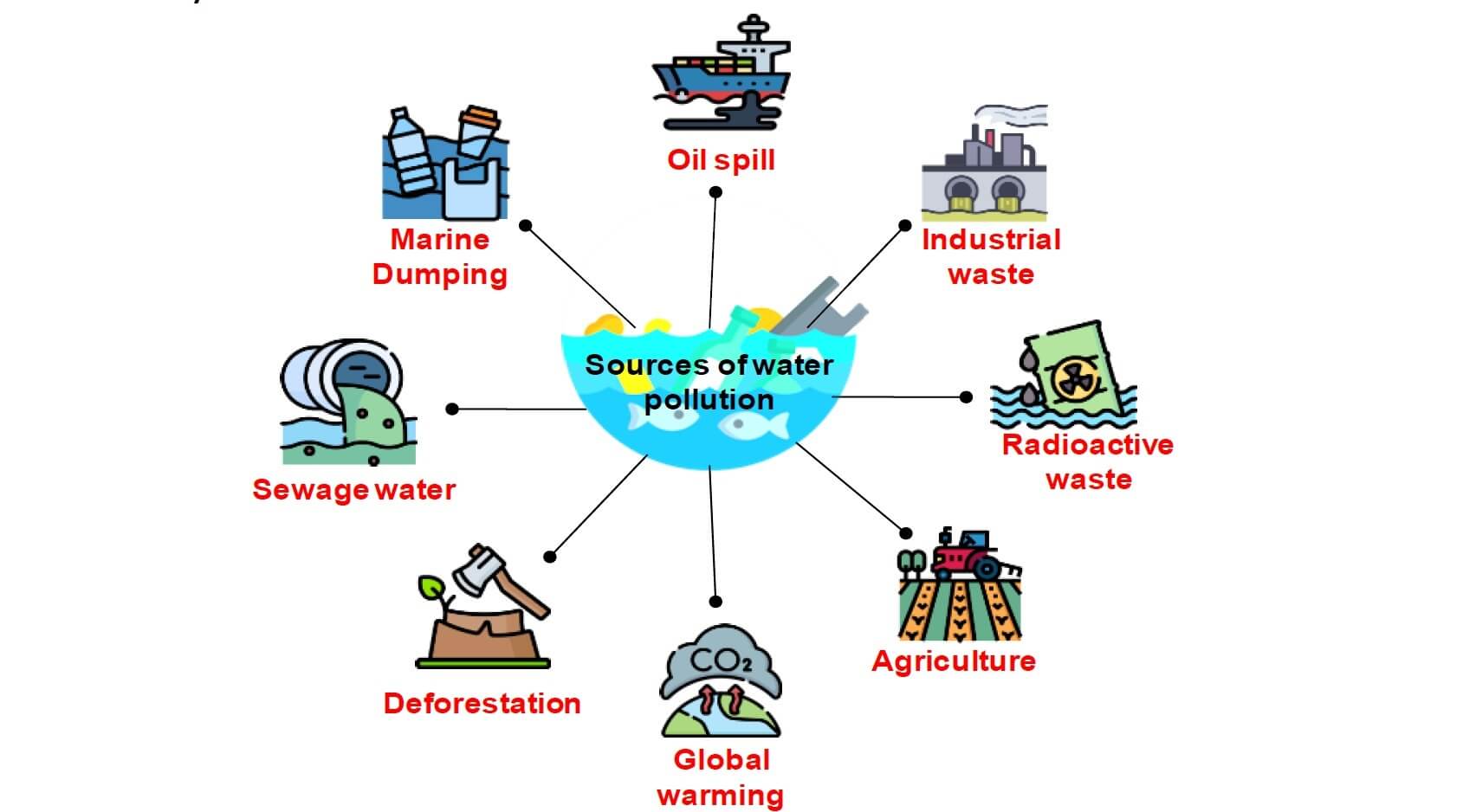
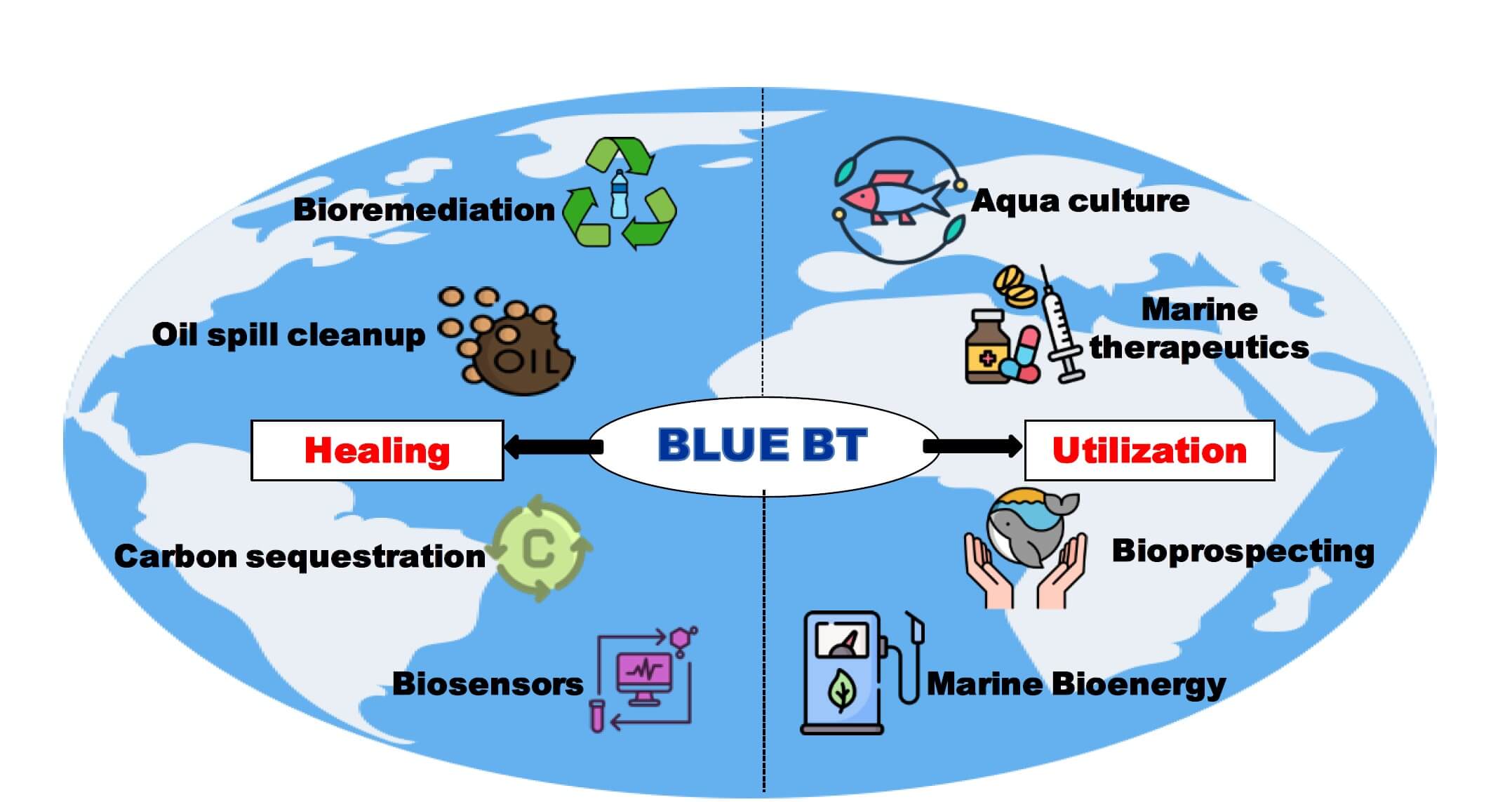
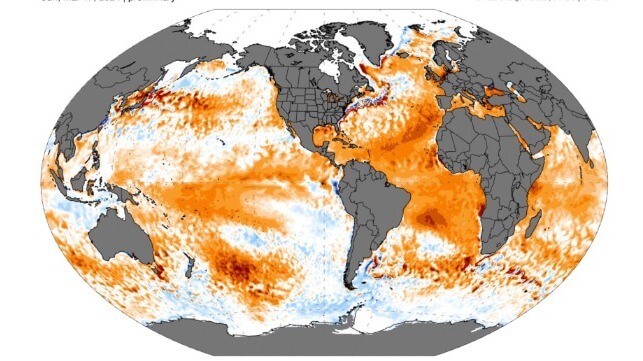
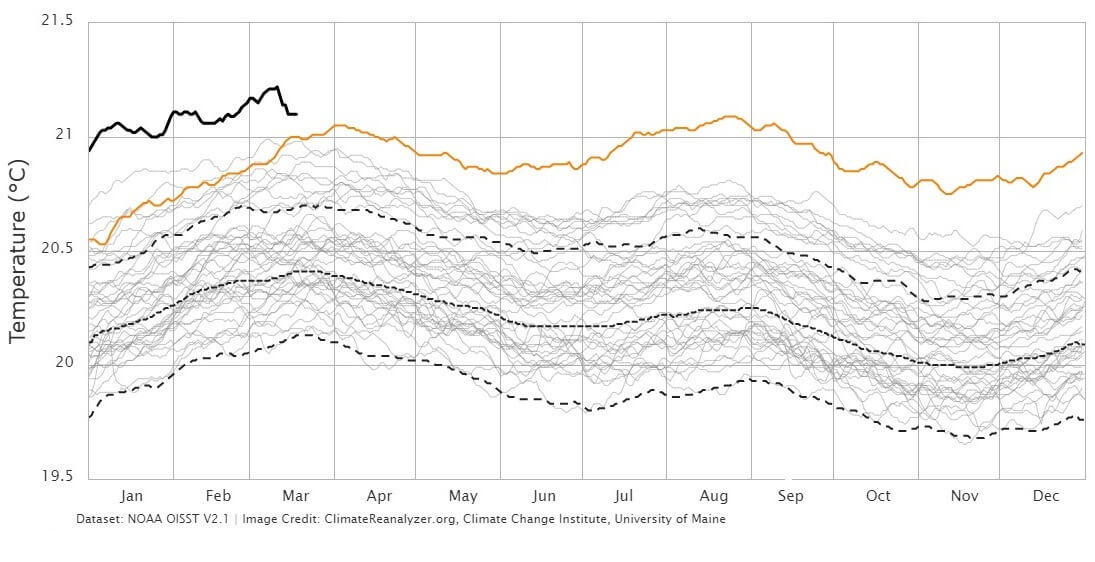 Global average sea surface temperatures from March 2023 (orange) through March 2024 (blue) broke daily records every day for a year, and set new all-time records multiple times (UMaine / NOAA)
Global average sea surface temperatures from March 2023 (orange) through March 2024 (blue) broke daily records every day for a year, and set new all-time records multiple times (UMaine / NOAA)